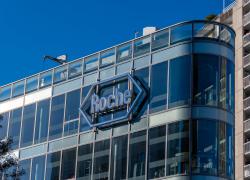
Boehringer slims down in SIRPα
The group has canned its first-generation project, hoping that a follow-on will reach more patients.
The group has canned its first-generation project, hoping that a follow-on will reach more patients.

Boehringer Ingelheim has hopes of becoming a serious cancer contender, but it’s still slimming its pipeline down: the company told ApexOnco that it abandoned a first-generation SIRPα inhibitor, in favour of a next-generation project that could address more patients.
Still, there are big doubts about targeting the CD47/SIRPα axis following previous failures in this space. While Boehringer’s big oncology hope, the HER2-targeting kinase inhibitor zongertinib, looks likely to gain FDA approval soon, the rest of its pipeline includes riskier bets, such as a Sting agonist and a B7-H6-targeting T-cell engager.
More alleles
There are two major SIRPα variants: V1 and V2. The discontinued asset, BI 765063, binds to V1, so can only address V1 homozygotes. In the Americas this subset is thought to account for around a third of the population, although this varies by region.
Boehringer’s second-generation asset, BI 770371, is designed to recognise both the V1 and V2 variants, thereby covering the entire patient population.
The group’s head of oncology, Itziar Canamasas, told ApexOnco that this was the main reason behind the decision. “We’re encouraged by the signals we’ve seen [with BI 765063], but we’re taking it now to the next level by going into the broader population.” Both products were developed in partnership with OSE.
The recent ASCO meeting heard that BI 765063, in combination with Boehringer’s investigational anti-PD-1 MAb ezabenlimab and Erbitux, produced an ORR of 47% among 17 patients with relapsed head and neck cancer in a phase 1 trial. Two of the eight responders had PD-L1 levels of less than 1% at baseline.
As a benchmark, Keytruda and Opdivo have produced ORRs of 12% and 13% in second-line head and neck, in Keynote-012 and Checkmate-141 respectively.
At ASCO Boehringer also presented data on the next-gen BI 770371, from a phase 1 late-line solid tumour trial that tested the project with and without ezabenlimab. However, this found only one partial response among 36 patients, in the combination cohort.
This project will need to show more promise to justify continued development. A phase 1 study in head and neck cancer, comparing BI 770371 plus Keytruda and with or without Erbitux, started in May. The trial includes a Keytruda monotherapy arm, so should at least give an indication of whether a BI 770371 combo could do better.
Pipeline
The big upcoming event for Boehringer is zongertinib’s FDA approval decision in second-line HER2-mutant NSCLC, due in the third quarter; meanwhile, Canamasas highlighted several more of the group’s oncology projects.
The next most advanced is the DLL3-targeting T-cell engager obrixtamig. At ASCO, a phase 1 study reported a 22% ORR among 60 DLL3-positive patients with extra-pulmonary neuroendocrine tumours; however, this rose to 40% if only DLL3-high patients were included.
Meanwhile, the Dareon-09 trial, also at ASCO, found a 69% ORR when obrixtamig was combined with chemo in relapsed/refractory small-cell lung cancer. Amgen’s T-cell engager Imdelltra is the only DLL3-targeting drug approved, based on a 40% ORR with monotherapy in the Dellphi-301 trial in relapsed SCLC. One question is whether Boehringer will be able to differentiate its asset.
The German group is also developing projects against Sting and FAP, two targets that have seen their fair share of failure. Another oncology hope is a B7-H6 T-cell engager – a target where the only other clinical-stage competitor is TG ImmunoPharma’s TGI-6, according to OncologyPipeline.
Boehringer has had some setbacks recently, discontinuing its SOS1 inhibitor BI 1701963 and the MDM2 inhibitor brigimadlin. It will have to hope for more luck with its remaining pipeline.
2080













